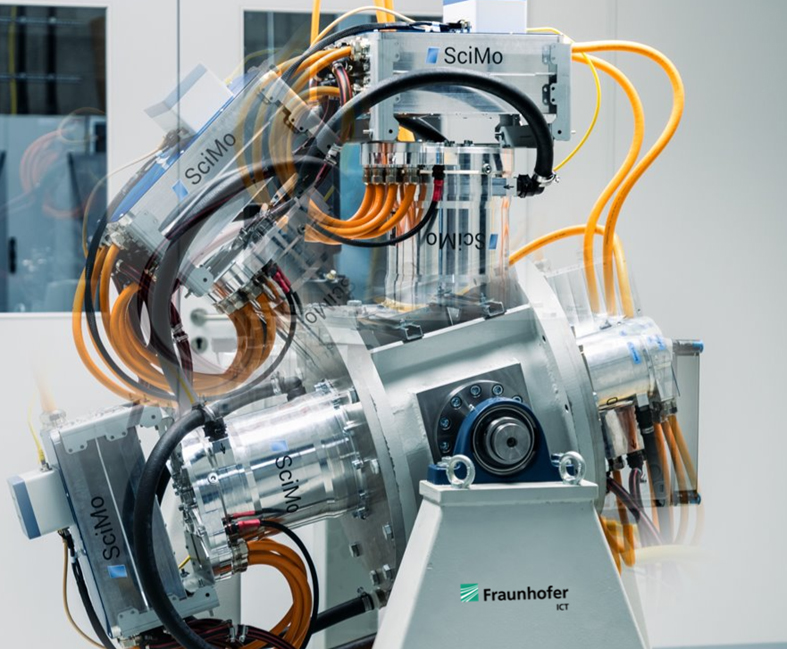Climate change is an unprecedented challenge for modern society. Numerous studies confirm the urgent need to decarbonize global industry and drastically reduce pollutant emissions in all sectors, including aviation.
Although the global environmental impact of aviation is mainly caused by small- to medium-range aircraft due to their high volume of operations, breakthrough technologies can only be developed for the energy needs of these applications once new technologies are mature at a smaller scale. The transformation of regional aviation, i.e. aircraft covering distances of 500 to 1000 km with a capacity of up to 100 seats, will therefore play an important role in achieving future sustainability.
Electric motor swivel test rig of the New Drive Systems division in the research factory for testing propeller systems (electric engines and gearboxes)
Neither battery nor liquid-hydrogen-powered fuel cell technology are mature enough to enable fully electric regional aircraft within the next decade. An intermediate step is therefore needed to significantly reduce greenhouse gas emissions by 2035. The development of a hybrid-electric propulsion system for regional aircraft with at least 50 % hybridization is a very demanding but achievable intermediate step, and can enable a reduction in fuel consumption of at least 50 % compared to state-of-the-art regional aircraft in 2020. A thermal engine that enables the use of 100% sustainable aviation fuel will make it possible to reduce greenhouse gas emissions by 90% over the entire life cycle, bringing them close to zero.
The AMBER project (innovAtive deMonstrator for hyBrid-Electric Regional application) addresses this issue and aims to advance key hybrid-electric components and validate a product-representative fuel-cell-based parallel hybrid-electric propulsion architecture for next-generation regional aircraft with an EIS by 2035, to meet the ambitious environmental targets of the SRIA and the Clean Aviation initiative.
 Fraunhofer Institute for Chemical Technology ICT
Fraunhofer Institute for Chemical Technology ICT
